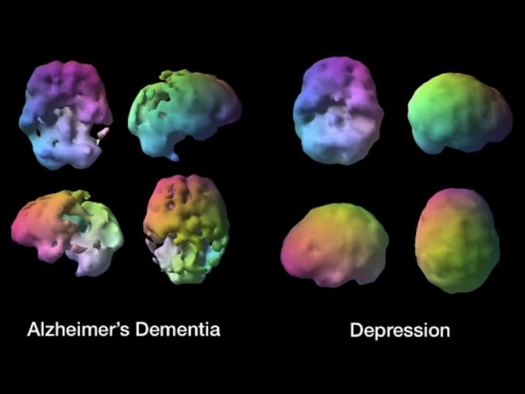Peggy Sarlin's Awakening from Alzheimer's interview with Dr. Jay Faber
BrainSPECTscansAmenClinic.jpg

Image courtesy of Amen Clinics
Dr. Faber is with the Amen Clinic in California. They use a SPECT scan to measure the blood flow through the brain, looking at function instead of structure. The brain is divided into thirds. We will be talking about these three areas of the brain and the thalamus and anterior cingulate.
1. When there is decreased blood flow in the front third of the brain including the frontal, temporal lobes and hippocampus the patient presents with dementia. The doctor recommends vinpocetine or huperzine A. If there is irritability he adds in magnesium and taurine. With temporal lobe and basal ganglia issues there are often anger, stress, anxiety and tension issues. For this he recommends GABA. The prescriptions commonly prescribed include Ativan, Xanax but these can be toxic to the cortical surface and actually decrease blood flow.
2. When there is a decrease in blood flow to the middle third or cortex, it is more indicative of Alzheimer’s disease.
3. A decrease in the back third or the occipital cortex and parietal lobes it is called “Lewy Body Dementia” and is commonly seen with Parkinson’s. When the flow is deficient in the middle third or back third of the brain he recommends ginkgo biloba, N acetyl cysteine (NAC), Coenzyme Q10, Amen’s Brain and Memory Power Boost Supplement (which has most of the supplements they recommend in general). They have seen a 25% increase in memory after three months on average using the Boost Supplement.
4. When the thalamus is involved, the patient often presents emotional issues like depression. This is more indicative of Alzheimer’s. The thalamus becomes overactive and causes the patient to become lethargic. SAMe helps calm the thalamus in these cases.
5. The anterior cingulate can also become overactive causing the patient to obsess about things. In this case 5 Hydroxytryptophan, Inositol, saffron and St. John’s Wort all help increase serotonin levels and calm the anterior cingulate.
The SPECT scan can look at all five areas of the brain and pinpoint what is needed. It is a good idea to get a SPECT scan early as an ounce of prevention is equal to a pound of cure.
In addition to the scan, Dr. Faber recommends exercise to increase circulation; eat properly (protein to increase dopamine, avoid carbs and sugars, eat greens, eat proper fats, support the gut with probiotics, take a good multiple vitamin, and Vitamin D); and maintain neuroplasticity through a healthy lifestyle to stay alive, active and connected to the world and to each other.


